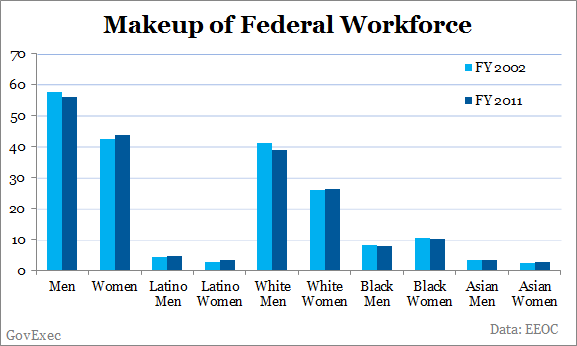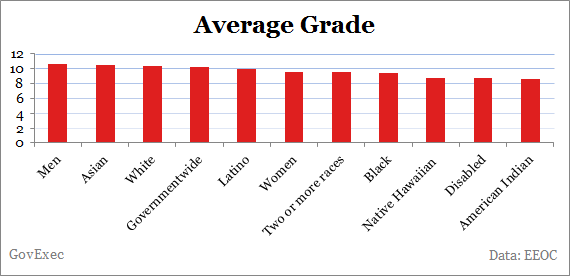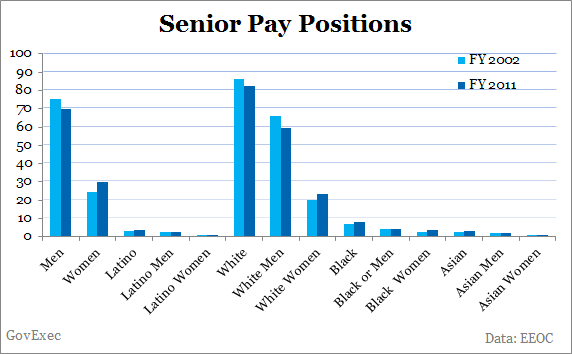
jorgen mcleman/Shutterstock.com
Three Charts Showing How White Males Hold the Highest-Paid Federal Jobs
The average male fed is a full grade level above the typical woman.
Minority and female workers make up more of the federal workforce than they did 10 years ago, but on average they bring home a smaller paycheck than their white, male colleagues.
According to the latest data from the Equal Employment Opportunity Commission , women in fiscal 2011 made up 43.81 percent of the federal workforce, a slightly smaller portion than the previous year. Overall, the share of Latino, black and Asian workers ticked up slightly since fiscal 2002.

However, female and minority employees were generally in lower-ranking positions than white males. The average General Schedule grade level of employees governmentwide was a GS-10.2 in fiscal 2011. Men averaged a 10.7, a full grade more than the female average of 9.6. Check out the chart below for the full range of GS averages.

Males also filled the vast majority of senior pay level positons in federal government. While more executives and managers are now female than in fiscal 2002 -- when three out of four senior pay positions were filled by men -- 70 percent are still male. And while about 18 percent of federal employees in fiscal 2011 were black, just 8.1 percent of senior pay positions were held by black employees. About 8 percent of the workforce in 2011 was Latino, but Latinos made up less than half of that percentage of senior pay positions. Conversely, white males made up 40 percent of the federal workforce in fiscal 2011, but nearly 60 percent of senior level employees. The full details are in this chart:

EEOC on Tuesday acknowledged the disparity in a statement.
“While the federal government continues to be a leader in workforce diversity, further progress is needed for it to become a model workplace for all employees,” said Carlton Hadden, director of EEOC’s Office of Federal Operations. “Agencies should pay particular attention to increasing diversity among the Senior Executive Service and at the highest grade levels, as well as enhancing recruitment and retention of people with targeted disabilities.”
( Image via jorgen mcleman / Shutterstock.com )







